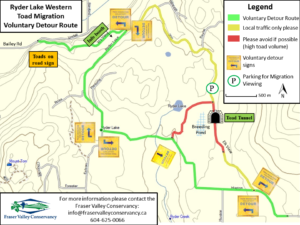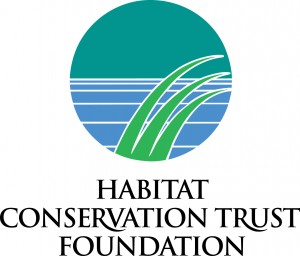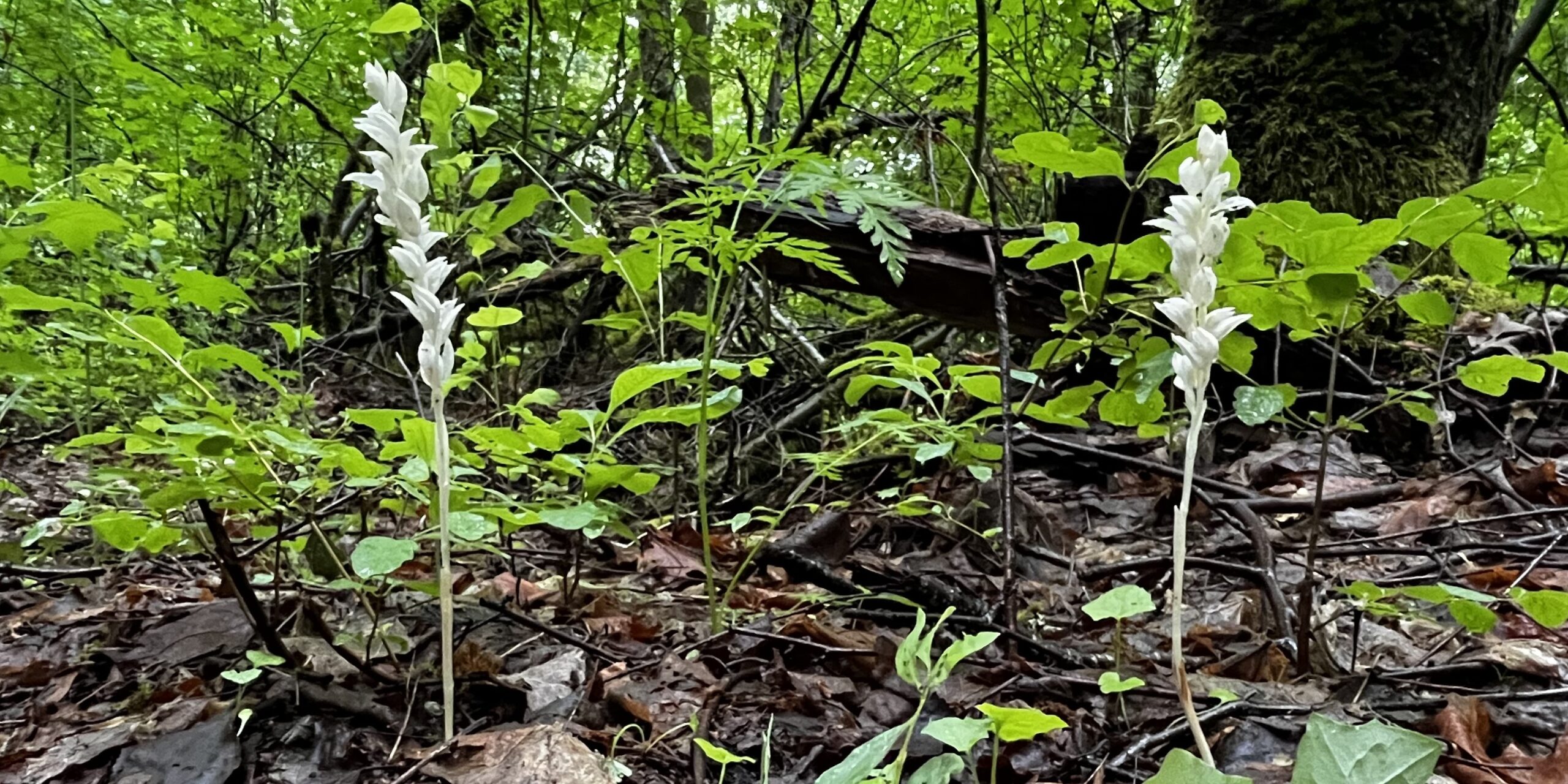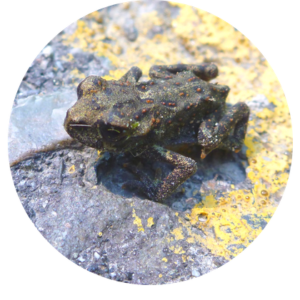
Get ready for the Ryder Lake Toadlet Migration of 2018!
Every year as the weather gets warmer, tiny juvenile Western Toads (toadlets), migrate by the thousands from their breeding pond – where they started life as tadpoles, to their forest home – where they live as adults. This Western Toad migration occurs in only a few known locations around the lower mainland!
Toadlet migration isn’t easy. When you’re only the size of a dime, everything becomes an obstacle! In the community of Ryder Lake in Chilliwack, the breeding pond is surrounded by a very big obstacle – a road – which cuts right across their migration route!
It’s tough to be a toad on the road! Because they’re so small, it’s virtually impossible to spot these tiny dark specks as they hop across the pavement. Toadlets that migrate across the road are often squished by cars whose driver’s are unaware that they’re even there at all…
In 2015, the we built a ‘toad tunnel‘ under Elk View Road along the toadlet’s most popular migration route. Special fencing directs them to this safe crossing. This helps them cross the road safely by going under the road instead of trying to hop over it between the cars.
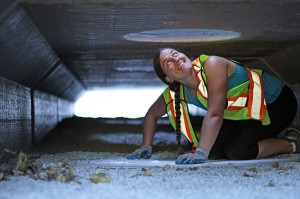
Checking out the Toad Tunnel. Photo by: Greg Laychak
.
Please Take the Toad Detour
Many people ask us why we still implement the toad detour on Elk Road now that we have the toad tunnel. Although we have a pretty good idea of where most of the toadlets tend to migrate across, not all toadlets use the same route to the forest.
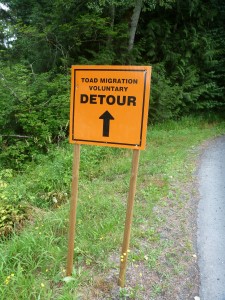 T
T
That means that not all the toadlets find their way to our safe crossing… Sometimes, they manage to sneak under the special fencing! Other times, they simply emerge out of the wetland and migrate in a different direction, like they did in 2017!
The toadlet migration occurs in the summer months of July and August, and usually lasts about two weeks. During the migration period, we ask people to use the voluntary detour to help ensure the survival of this important population of toads (and the six other species of amphibians that you don’t see migrating). We monitor the roads daily, and adjust the detour as needed.
By taking the detour, which is less than 400 metres, you can do you part to help the toads too! Take a look at this year’s Detour Map below to plan your route during toadlet migration.
.
Keep Your Distance!
Every year, many people want to witness the mass migration of tiny toadlets. While we understand that people may want to get the full toadlet experience by seeing it for themselves, car traffic and foot traffic is a real threat to the toads. Human presence – even while walking – can disturb their migration patterns, causing them to waste precious energy!
The residents of this area feel bad enough that they have to use these roads during the migration to get to and from their homes. Please don’t add to their stress by being toadlet sightseers!
The best way you can help the toadlets is by staying home, and watching our updates on Facebook and Instagram!
.
If you absolutely insist on coming up to see the toads, please, please make sure you stop at our the info sign at the community board outside the Llama farm, and pick up our brochure on the Ryder Lake Toad Migration, so you know where to park, and how to view them safely.
.
Click here to download the Ryder Lake Toad Migration brochure in advance.
.
Want to do even more to help the Ryder Lake toadlets?
Volunteer with the Migration Count
If you really want to see the toadlets and make a difference for their survival, you can volunteer with our toadlet monitoring program.
Help Sofi count the number of toads on the road to monitor the effectiveness of our toad tunnel. For more information, send an email to Sofi!
.
Make a Donation!
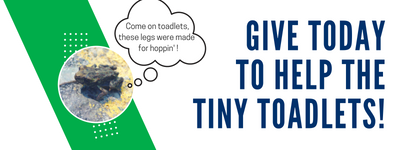 .
.
Our staff work hard to install toad fencing, maintain detour routes, and monitor the toad populations each year.
Make your donation to the Ryder Lake Amphibian Protection Program HERE!
.
Start your own “Toad Watch”
This Western Toad migration occurs in only a few known locations around the lower mainland. Some of the toads are lucky enough to have the breeding ponds in protected parks where roads are less of an issue. Others face similar urban impact challenges as those in Ryder Lake and need help from humans to ensure they can survive. And others are benefiting by moving in to newly created wetland restoration projects.
Have you seen toadlets at another location? At this time of year keep your eye out for the little tiny toads, if you see some take a photo and send it to us. We are trying to get an accurate picture of how many of these populations are out there.
.
This project would not have been possible without the continued support of the Habitat Conservation Trust Foundation.
